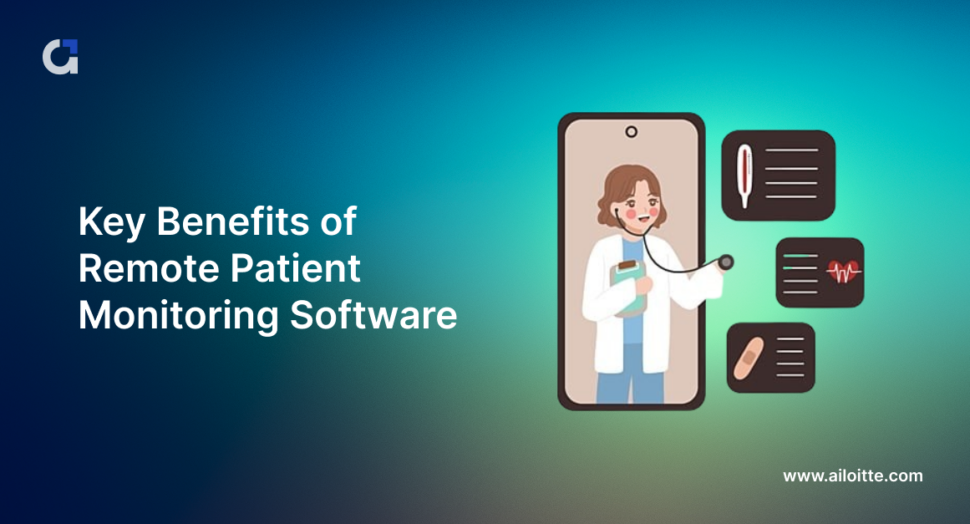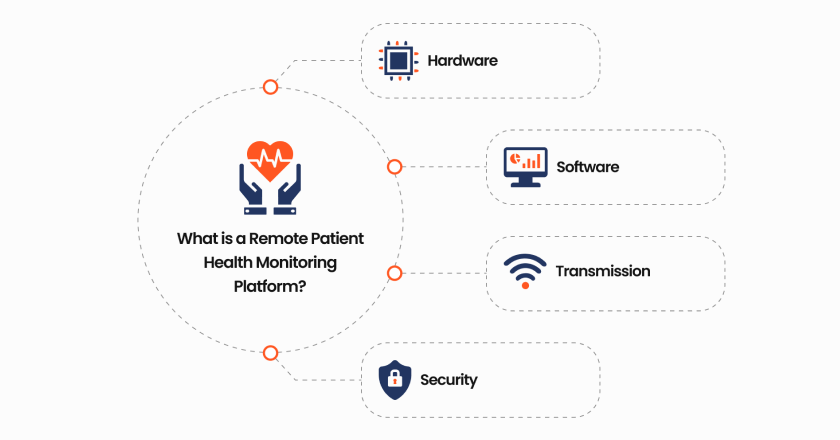Safeguard Remote Patient Monitoring Software: Protecting Patient Information
Revolutionize Medical Care With Remote Individual Keeping An Eye On Services
Remote client tracking solutions have arised as a transformative device in this transforming environment, providing a promising service to lots of medical care challenges. As we dive into the complexities of remote individual tracking solutions, it becomes obvious that the effects get to much past benefit and performance, forming a future where medical care is a lot more aggressive, personalized, and available.
Benefits of Remote Client Tracking
Remote Person Monitoring deals a wide range of benefits in improving health care delivery and person end results - rpm software. One of the primary advantages of remote client monitoring is the ability to provide continuous treatment beyond standard medical care setups. By remotely tracking essential indications, signs and symptoms, and other health and wellness data in real-time, doctor can identify prospective problems early, resulting in timely interventions and boosted health results for individuals
Additionally, remote person surveillance improves patient engagement and empowerment. Patients come to be a lot more associated with their care as they can actively join checking their health and wellness and getting tailored responses from health care specialists. This raised interaction frequently leads to much better adherence to therapy strategies and a higher feeling of control over one's health.
Additionally, remote individual surveillance has actually been shown to reduce health care expenses by avoiding unnecessary health center readmissions, decreasing emergency clinic check outs, and maximizing resource use. By proactively recognizing and managing chronic problems wellness problems early, remote tracking can aid prevent expensive difficulties and boost general health care performance.
Influence On Health Care Accessibility
Offered the shown benefits of remote client tracking in improving client end results and minimizing health care prices, it is vital to discover its effect on health care accessibility. Remote person surveillance solutions play an essential function in enhancing health care accessibility by overcoming geographical obstacles. People staying in remote or underserved locations can currently obtain quality care without the demand to take a trip fars away to medical care centers. This is especially valuable for people with persistent conditions or wheelchair problems who may discover it challenging to gain access to typical healthcare services consistently.
In addition, remote individual monitoring boosts health care accessibility by giving continual tracking and timely treatments, lowering the demand for constant in-person gos to. This not only saves time for both individuals and healthcare companies but likewise makes certain that clients obtain timely care, causing improved health and wellness end results. Additionally, by making it possible for healthcare experts to remotely keep an eye on a bigger number of individuals, remote person monitoring services aid in addressing the lack of medical care suppliers in certain regions, eventually enhancing total healthcare availability for a broader population.
Enhancing Person Outcomes
How can remote patient tracking services positively affect individual end results in the healthcare landscape today? By allowing constant monitoring of people' wellness metrics outside traditional healthcare settings, remote client tracking services play an essential function in improving person outcomes - rpm software. Via the real-time monitoring of important signs, signs, and description medication adherence, medical care providers can quickly readjust and interfere therapy strategies as required, bring about far better health outcomes
Remote client monitoring also equips individuals to take a much more energetic function in handling their health. By supplying them with tools to track their development and communicate with doctor from another location, people are more involved and motivated to stick to treatment regimens. This increased individual involvement usually results in improved wellness end results, decreased health center readmissions, and far better overall top quality of life.
Additionally, remote client tracking permits very early detection of prospective health and wellness complications, enabling timely interventions that can avoid exacerbations of chronic conditions or avoidable emergency room visits. By helping with proactive and customized care, remote client tracking services add significantly to improving individual outcomes and driving favorable healthcare results.
Conquering Application Challenges
To successfully incorporate remote patient monitoring solutions right into healthcare systems, organizations need to attend to vital execution obstacles head-on. Among the key challenges is ensuring the interoperability of various surveillance gadgets and systems with existing digital health document (EHR) platforms. Compatibility problems can impede the seamless transmission of patient data, jeopardizing the performance of remote monitoring. Furthermore, information security and privacy issues position substantial obstacles. Healthcare providers should abide by stringent policies to protect delicate client information transferred through remote surveillance innovations.
Additionally, resistance to transform among health care specialists can hamper the fostering of remote client surveillance solutions. Training programs and academic campaigns are necessary to familiarize personnel with the new technologies and procedures. Financial constraints also provide a hurdle, as first investments in facilities and innovation can be substantial. Organizations need to very carefully assess the roi and lasting cost financial savings connected with remote surveillance to justify go to website the expenditure.
Future Trends in Remote Tracking
Remote tracking innovations are poised to change the medical care sector by improving individual care and maximizing treatment results. These modern technologies can analyze large volumes of individual information in real-time, offering healthcare more helpful hints providers with beneficial insights and predictive analytics to enhance decision-making and customize person treatment.
This pattern permits for preventive and proactive medical care treatments, leading to far better management of chronic problems and very early detection of prospective health and wellness concerns. Generally, the future of remote monitoring holds wonderful prospective for advancing healthcare delivery and boosting person outcomes.

Conclusion
In final thought, remote patient monitoring solutions have the prospective to revolutionize health care by boosting individual end results, raising availability to care, and getting rid of execution difficulties. As modern technology continues to development, the future patterns in remote tracking are promising, with the prospective to better boost healthcare distribution and patient care. Executing remote monitoring solutions can result in a much more effective and effective medical care system, inevitably benefiting both clients and doctor.

How can remote individual monitoring solutions favorably impact client results in the healthcare landscape today? By making it possible for continual monitoring of people' wellness metrics outside traditional health care settings, remote client monitoring services play an essential role in enhancing person end results.In verdict, remote individual tracking services have the potential to change medical care by enhancing individual outcomes, increasing ease of access to care, and overcoming implementation obstacles.